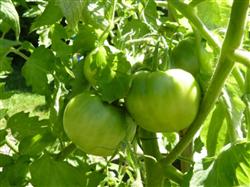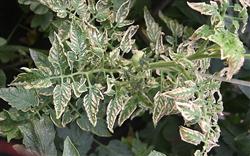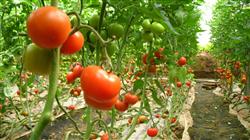Tomato planting techniques: how to prevent abortive seedlings in summer?

How to prevent abortive seedlings of tomato in summer? Please introduce the method of high temperature and rainy summer and serious seedling failure of tomato. During the summer period, "two reforms, three timely" management measures should be taken to prevent seedling failure. By changing the cultivation method from flat bed cultivation to ridging cultivation, tomato roots can be prevented from being soaked and aborted seedlings. If it has been cultivated in a flat bed, it can be combined with soil cultivation to turn the center of the border into a ridge. It is generally divided into 2-3 times to prevent excessive soil cultivation at one time and affect the absorptive capacity of the root system. In the pruning technique, when the first inflorescence is fruiting, the trunk is replaced by the first lateral branch growing under the second inflorescence. similarly, after two or three inflorescences, one side branch is selected in the middle of the trunk as the trunk. In this way, it can continuously pick the heart and change the head to stimulate the growth of the dwarf, so that the plant will not be defeated in summer and have more fruit. Timely water supply fertilizer about 7 days watering, 15-20 days with urea or ammonium nitrate and other available nitrogen fertilizer topdressing, about 5 kg per mu. At the same time, potassium dihydrogen phosphate solution was sprayed on the leaves to make the plant strong and not overgrown. The main diseases of tomato during the summer period are blight and virus. The blight was sprayed with carbendazim and Dyson zinc at the ratio of 1:1 and sprayed again at intervals of 10-15 days. Before the onset of virus disease, spraying 0.10.3 potassium permanganate solution every 7-10 days can prevent the occurrence of virus disease; in addition, 1500-2000 times of 40% dimethoate EC was sprayed in time to kill aphids and prevent aphids from spreading virus disease. Timely drainage of stagnant tomatoes is afraid of flooding, watering is carried out when it is cool in the morning and evening, and the stagnant water in the ditch is removed immediately after irrigation. Click to get more tomato planting techniques click to get more vegetable planting techniques
- Prev

Tomato planting techniques: what is Tomato Leaf Curl virus Disease?
What is tomato leaf curl virus disease? Please introduce that after tomato leaf curl virus disease is infected, the upper leaves become smaller, the leaf margin curls up, the leaves wrinkle and curl, the internodes become shorter, it is difficult to blossom and bear fruit, the fruit shape is small, and the ripening is slow. The infected plants grew slowly and were obviously dwarfed. Harm the curled leaves of tomato.
- Next

Tomato planting techniques: what should be prevented from growing tomatoes in summer?
What should be prevented from growing tomatoes in summer? Please introduce the following two situations to prevent tomato planting in summer: if the temperature of flower and fruit is too high in daytime, more than 34 ℃, higher than 20 ℃ at night, or continuous high temperature of 40 ℃ in daytime for 4 hours, the style elongation is significantly higher than that of anther cartridge, resulting in ovary atrophy, so that the pistil and stamen can not.
Related
- Where is it suitable to grow horseradish in China? it is expected to see the middle altitude horseradish in Alishan.
- How to prevent tomato virus disease reasonably? (Control methods included)
- Many people like to plant towel gourd on the balcony. What are the main points of this method and management?
- What crops can chili peppers be mixed with?
- Fertilization techniques and matters needing attention in Tomato
- What are the grafting techniques for peach seedlings in spring?
- Harm and control methods of root swelling disease of Chinese cabbage
- What are the pests of sweet potatoes? How to prevent and cure it?
- Symptoms, causes and Control methods of navel Rot in Tomato
- The cause of "Cucumber rotten bibcock" in Farmers' planting Cucumber and its Control Plan

